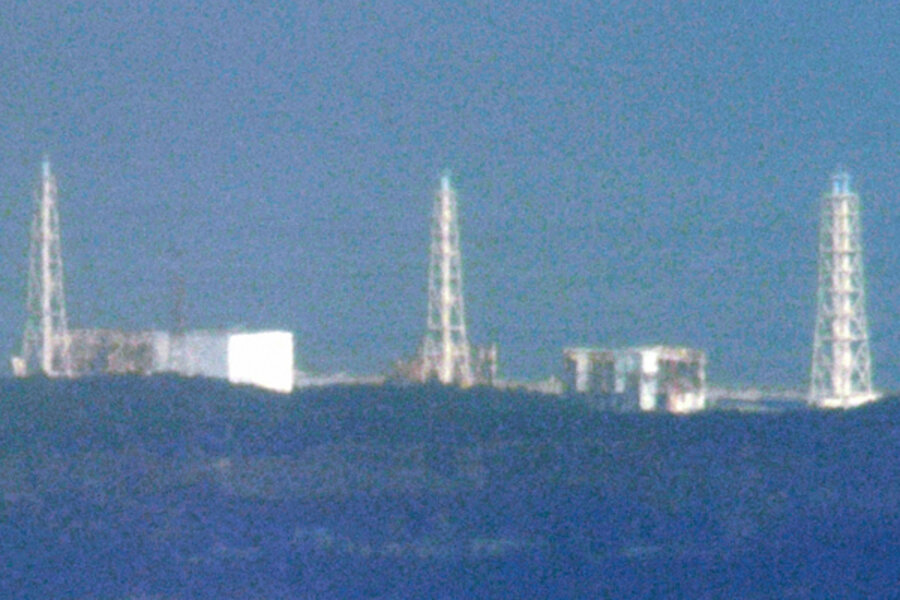Japan's Fukushima: incorrect readings, radioactive water found in tunnels
Loading...
| Tokyo
The operator of the crippled Fukushima Daiichi nuclear plant was criticized for announcing incorrect radiation levels – higher than the actual readings – even as more leaks were being discovered in another part of the facility.
On Sunday evening TEPCO (Tokyo Electric Power Company), which has been criticized by officials for its handling of the crisis, said that water found in the No. 2 reactor’s building was 10 million times more radioactive than normal. It later announced that the correct reading was 100,000 times higher than the normal level.
A string of conflicting reports, alleged safety mishaps, and miscalculated radiation readings have added to confusion and unease in Japan surrounding the nuclear situation.
It is not clear what led to the inaccurate reading of the water, or what the actual reading of the radiation was. TEPCO reported on its website there was a "mistake in the assessment of the measurement of iodine-134."
Chief Cabinet Secretary Yukio Edano described the mistake as “absolutely unforgivable,” while acknowledging the strain that the workers at the site are under.
Radioactive water found in tunnels
TEPCO also announced Monday that high levels of radiation were detected in water in tunnels outside the No. 2 unit. The 1,000 millisieverts readings were taken from water in underground shafts outside the radiation-controlled areas.
One hundred millisievert per hour is generally regarded the amount at which cancer risks are increased. One thousand millisieverts is about four times the legal level for one year’s acceptable exposure for workers, though some experts maintain that even much higher levels have no discernible effect on human health.
"The airborne radiation is mainly contained within the reactor building. We must make sure this water does not seep out into the soil or out to sea," said Chief Cabinet Secretary Yukio Edano.
Mr. Edano has become the voice of the government over the past 10 days, winning admirers with his calm matter-of-fact demeanor, as Prime Minister Naoto Kan has remained largely absent from the public eye.
The Daily Telegraph reports that the water from the basement and tunnels under reactor No. 2 is now seeping into a trench outside the reactor some 180 feet from the sea.
"But we do not believe it is leaking into the ocean. We are now working out where the cause of the leak is and finding ways to remove the water as soon as possible," said Hiro Hasegawa, a spokesman for TEPCO.
Radioactive seawater
Levels of radiation in seawater around the coastal nuclear power plant dropped over the weekend, although currents have spread radioactive water farther up the coast. Though experts told the Telegraph that radiation leaking into the ocean would most likely pose little threat as it would dissipate quickly, unlike when it is trapped in puddles.
On Friday and Saturday, levels of iodine-131, a radioactive substance, were found to be 1,000 times higher than normal in seawater 1,000 feet from the plant – though this had dropped to 250 times by Sunday. However, readings taken in water near Fukushima City, to the northwest of the plant, which have been largely unaffected until now, were found to be higher than normal on Sunday.
Three workers who received burns from radioactive water at the nuclear plant were due to be released Monday from a radiation research center in nearby Chiba Prefecture. The center has declared it does not expect the men’s health to suffer long-term.





